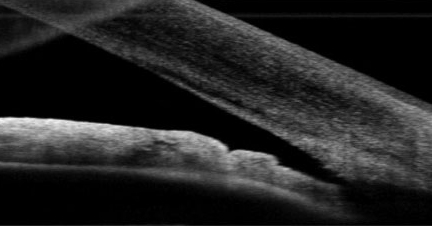 |
|
Narrow angles can often be kept from closure with prophylactic iridotomy. Photo: Michael Cymbor, OD. Click image to enlarge. |
Prophylactic laser peripheral iridotomy (LPI) is a frequently performed procedure to prevent primary angle closure glaucoma (PACG), and recent evidence validates that approach in appropriate patients.
A randomized controlled trial enrolled 480 participants over the age of 50 from glaucoma clinics in Singapore who were bilateral asymptomatic primary angle closure suspects (PACS). All participants underwent prophylactic LPI in one randomly selected eye, while the fellow eye served as a control. The cohort was followed for five years.
Eyes that underwent prophylactic LPI had significantly fewer endpoints compared with control eyes. The overall incidence of PACG was low (10 eyes), with older age and higher post-dilation IOP associated with an increased risk.
“The incidence of reaching an endpoint in untreated PACS eyes was about twice that of eyes undergoing prophylactic LPI; most of this difference attributable to a nearly three-fold higher rate of developing peripheral anterior synechiae (PAS),” the authors explained in their study. “The overall incidence of any endpoint after five years was low, even in the control group. This 45% reduction in risk, mostly from preventing the development of PAS, mirrors the findings from the only other randomized controlled trial of the treatment of PACS, the ZAP trial.” The ZAP trial also found LPI to be safe for PACS and reported a lower incidence of endpoints over six years.
There was no immediate threat to vision, according to the authors, with the exception of two eyes that developed acute angle closure in the control arm and one eye in the treatment arm.
In addition to older age and post-dilation IOP, diabetes was also pinpointed as a borderline risk factor. “Diabetes mellitus is known to affect the autonomic nervous system and thus can influence iris convexity and pupil size, which may possibly increase the risk of development of PACG,” the authors explained.
Baskaran M, Kumar RS, Friedman DS, et al. The Singapore asymptomatic narrow angles laser iridotomy study (ANA-LIS): 5 year results of a randomized controlled trial. Ophthalmology. August 19, 2021. [Epub ahead of print]. |


